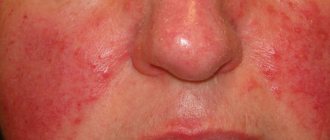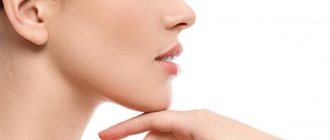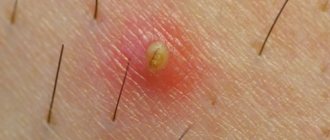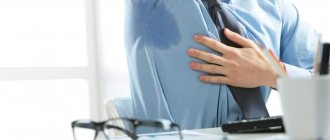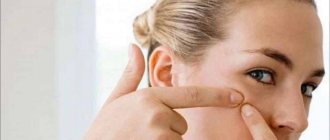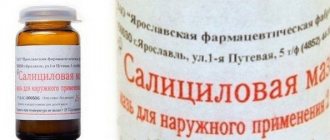Causes of rashes on the chin
The lower part of the face is a sensitive area. It comes into contact with clothing, is exposed to cold, wind and suffers from irritation. To find out why acne appears on the chin, you need to understand what the external and hidden causes are.
External reasons include:
- friction on woolen scarves, sweater necks in winter;
- habit of touching skin with fingers;
- inappropriate cosmetic care;
- frequent scrubbing of the epidermis.
It is impossible to find out what acne on the chin means without a thorough examination. If redness continues to bother you, consult your doctor. Hidden factors pose a serious danger, as they signal internal diseases. It is possible to determine which organ is not in order in women and men only after diagnosis, having received test results.
A rash on the face can be a consequence of:
- indigestion;
- disturbances of intestinal microflora;
- accumulation of toxins in tissues;
- high temperature;
- viral diseases;
- allergic reaction;
- herpesvirus;
- dermatitis;
- inflammation of the ovaries;
- hormonal imbalances.
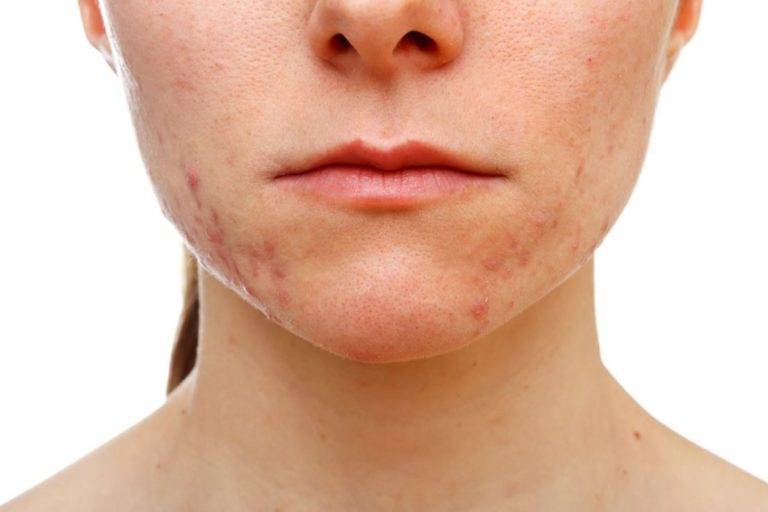
Redness and irritation are caused by demodex mites. A microscopic organism lives on the skin of people. A small population does not cause problems, but when a person’s immunity is weakened, the mite multiplies rapidly, causing oily sheen, acne and pimples.
Acne in women
The main cause of rashes in women is improper functioning of the sebaceous glands. The produced fat does not have time to leave the pores naturally. A blockage appears in which bacteria multiply. Small and large pimples and blackheads pop up.
- Acne on the chin indicates problems with reproductive function. This is a common symptom of polycystic ovary syndrome. The disease is characterized by a decrease in the production of estrogen and an increase in the production of androgens - male sex hormones. The failure is reflected in the structure of sebum. It becomes dense, viscous, instantly clogs pores and leads to the appearance of red, inflamed pimples.
- If acne on the chin in women is a constant occurrence, the doctor should examine the thyroid gland. Its hyperfunction provokes excessive sweating and sebum production. The combination of these factors contributes to the formation of painful rashes.
- Sometimes pimples are harbingers of menstruation. This is how the body responds to hormonal changes. The rash usually goes away without consequences when the critical days end
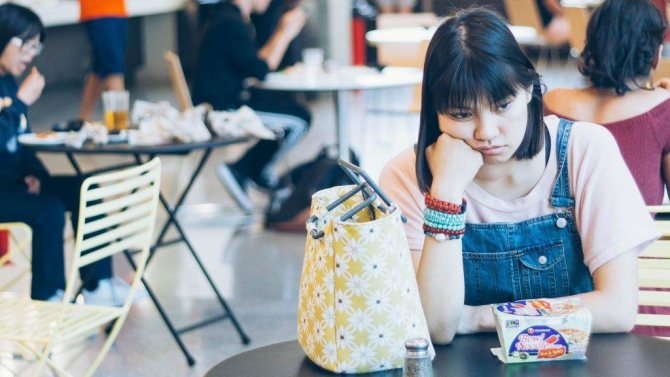
Many dermatological problems in women arise due to lifestyle. Abuse of sweet foods, fast food, flour products, and smoked meats worsens the condition of the dermis, causing it to become shiny and inflamed. Frequent stress, bad habits, nervous strain, depression, and heredity play an important role.
Teenage acne
Acne on the chin is a concern during adolescence. A hormonal surge during this period leads to oily epidermis and clogging of pores with sebum.
Exacerbating the problem:
- excess sweets in the diet;
- carbonated drinks;
- chips, crackers;
- lack of vitamins.
Often the cause of pimples on the chin in teenagers is inappropriate cosmetic care. Wash your face in the morning and before bed with special foams that regulate the production of subcutaneous sebum.
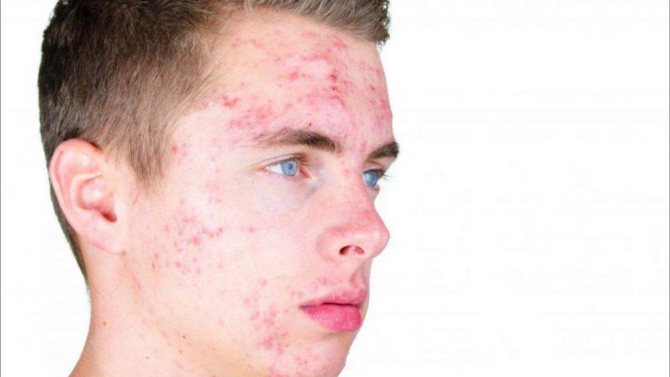
For treatment, use products recommended by a cosmetologist. They should include salicylic acid or zinc for quality disinfection and healing.
Rash in men
Representatives of the stronger sex suffer from facial irritation no less often than women. The appearance of acne on the chin in men indicates an irregular, unbalanced diet. The lack of vitamins, amino acids, and minerals worsens the condition of the dermis and gives rise to inflammation.
Small white pimples on the chin appear when a man rarely changes shaves and shaves with a dull blade. Sometimes redness is caused by:
- incorrectly selected lotion;
- poor quality skin cleansing;
- friction of the lower jaw on the collar of clothing;
- weathering.
Acne on the chin in women: which organ is wrong?
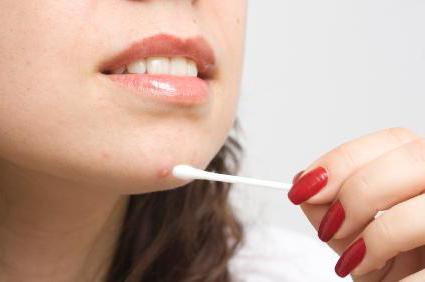
And it’s very difficult to keep track of all this, because sometimes a problem can go unnoticed for a long time until it makes itself known, for example, with rashes on the face. It is believed that the face is the mirror of the body. And if various inflammations constantly appear on this part of the body, it means that some processes within a person are not proceeding as they should. It is very common to see acne on the chin of women. Which organ is not in order, and what information do these rashes convey? Such questions concern many female representatives. This problem is quite common, so it’s worth understanding why acne appears on the chin.
Causes of acne on the chin in women
Those who are interested in which organ is responsible for acne on the chin should know that rashes on the lower part of the face can signal problems in different areas of the body. Also, acne on the chin can be a response of the body to some unpleasant external influence. Specialists will help you find out the specific cause, and you should definitely contact them when rashes appear too often and do not go away for a long time. Here are the main reasons why acne may form:
Premenstrual period
This is the most common phenomenon; before menstruation, women may experience rashes on their face, which then quickly disappear. In this case, there is no need to worry, since this is a normal reaction of the body. By the way, acne also appears in pregnant women, and there is nothing wrong with that either.
Weakened immunity
When a person’s immunity noticeably weakens, the body does not have time to turn on all its protective functions. As a result, rashes can form, not only on the face, but also on the body. In this case, it is better to consult a therapist so that he can prescribe vitamins that help the body improve immunity. Colds and hypothermia
The appearance of inflammation after hypothermia or during illness is a response of the body. The body’s immunity is weakened, and the infection that gets inside multiplies in the sebaceous plugs. Problems in the endocrine system
Experts have long established that when the endocrine system malfunctions, rashes also appear on the chin. As soon as an imbalance of estrogen and testosterone occurs, the sebaceous glands are activated and a large amount of sebum is produced. Because of this, the pores become clogged, after which acne appears. If the endocrine system has failed, then you need to urgently contact specialists and start treatment. After all, if you start the situation, you will then have to be treated for many diseases.
READ ALSO: Cream against age spots
Poor nutrition
The most delicious food is often the most harmful. And its consumption can also lead to acne. To check whether this is really causing inflammation, you can give up fatty, spicy, sweet foods and canned foods for a week.
Digestive system diseases
If any problems arise in the digestive system, the body begins to accumulate toxins, and this is very harmful to the skin. In this case, usually, inflammation appears on different parts of the body, and in addition, the face often swells.
These are the main reasons why acne may appear, but do not forget about improper care, poor-quality cosmetics, stress and the environment. The face is a very delicate part of the body that requires good care.
See also: “How to get rid of acne on your face at home”
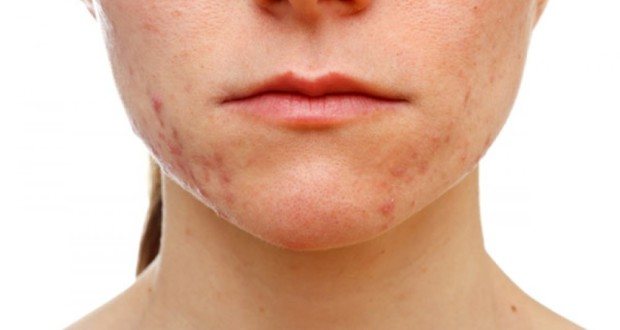
Subcutaneous acne on a woman’s chin: causes and treatment
Inflammations on the chin come in different types and types. It is common to see white pimples on the chin in women or red pimples on the chin in women. Large subcutaneous pimples most often occur when inflammatory processes occur in the body. This just signals serious problems. And if the rashes are small, then most often they appear due to improper skin care or during colds.
READ ALSO: Enlarged pores on the face: how to get rid of them at home
Experts do not advise getting rid of rashes on the chin on your own. If you squeeze a pimple incorrectly, there can be serious consequences; sometimes even small scars or scars remain on the face after such a procedure.
Inflammations, if they appear for a serious reason, can only be cured in a comprehensive manner. You need to contact specialists so that they can prescribe medications, as well as carry out a number of physiotherapeutic procedures. In addition, you will have to pay more attention to your skin. Here are the basic tips for those who want to get rid of inflammation on the chin:
- It is best to treat skin that has inflammation with drugs that have a drying, anti-inflammatory and antiseptic effect. There are a huge number of them on the market, but it is better to listen to the recommendations of your doctor. If there are pustules on the skin, then products that have an antibacterial effect are used; painful acne is usually treated with antimicrobial and astringent drugs.
- If the situation is advanced and defects remain on the skin, you can go to beauty salons, where mechanical facial cleansing and ozone therapy are performed. The skin is also treated with laser and liquid nitrogen. A suitable method is also selected by a specialist.
- During treatment you need to go on a special diet. It is important to exclude all junk food from your diet and consume dairy products, fruits and grains.
- Also, during treatment you need to carefully monitor hygiene. You should not touch your face with dirty hands, and it is not recommended to apply cosmetics to your skin. Be sure to wash yourself thoroughly; you can also wipe the surface of the cell phone that comes into contact with your face with alcohol wipes.
See also: “Mask-gommage for problem skin“
How to deal with acne on your own
Before undertaking medicinal treatment, you need to try to get rid of acne “on your own”: change your facial skin care and review your diet, exclude from your diet fatty, spicy, salty foods and foods that can lead to the development of an allergic reaction, flour and sweets. Do not touch pimples with your hands. It is useful to constantly change your bed linen. Clean your face daily with special cosmetics. Many of them can be prepared at home.
Traditional medicine in the fight against acne on the chin
Natural tonics are better suited for cleaning skin affected by inflammation. They are prepared on the basis of herbs that have anti-inflammatory properties (chamomile, linden and calendula flowers, St. John's wort, oak bark). From them you need to prepare infusions daily (a spoonful of herbs per 200 milliliters of boiling water) and use them for rubbing or compresses.
Regular baking soda will help reduce the severity of the inflammatory reaction and remove blackheads from the surface of the chin. To do this, you need to add a small amount of water to the powder and use the resulting slurry as a scrub. To achieve a therapeutic effect, cleansing is carried out twice a week. It is useful to wash your face skin with soap and wipe it with a natural toner.
White spots should be treated with a mask made from boiled potatoes and egg yolks. The root vegetable is pre-cooked and pureed. Add raw yolk, a teaspoon of honey and heavy cream. All ingredients are thoroughly mixed and the finished mask is applied to the skin of the chin for half an hour.
Red acne should be treated with a mask made from bodyaga and blue clay. The ingredients are pre-mixed in equal proportions and brewed with boiling water. A paste is prepared from all this and applied to the chin. The mask is left on the face until completely dry, then removed from the skin with a damp cloth.
It is necessary to treat subcutaneous rashes on the chin with white clay and calendula. For preparation, experts recommend taking eight grams of natural powder and thirty milliliters of alcohol tincture. The ingredients are thoroughly mixed and applied to the affected area. After twenty minutes, wash off the mask under running water.
If the measures taken do not help, you should seek help from specialists. Acne on the face is treated by a dermatologist or cosmetologist.
Effective pharmaceutical remedies for acne and hardware treatment techniques
Drug therapy is selected taking into account the nature of the rash. Its general principles are shown in the following table.
| Acne shape | Drug treatment | Procedures |
| White acne | Ointments “Klenzitom”, “Retasol” | Mechanical cleaning, chemical peeling, electrocoagulation |
| Red pimples | Ointments "Metragil", "Skinoren" | Laser therapy, dermabrasion, chemical peeling |
| Subcutaneous acne | Curiosin ointment, Dalacina gel | Chemical peeling, cryomassage |
The treatment procedure should consist of the following steps:
- Cleansing the skin with water and antiseptic soap.
- Removing the stratum corneum with a scrub (it is better to use natural ingredients for this purpose, for example, ground coffee).
- Skin toning.
- Disinfection with salicylic alcohol.
- Applying medicinal ointments to the face (their selection depends on the type of rash).
- Visit a cosmetologist or dermatologist and receive specific therapy.
- Moisturizing problem skin with anti-inflammatory creams that contain zinc.
In the presence of internal pathologies, it is necessary to receive etiotropic treatment. Many men wonder: is it possible to shave during therapy? Only the attending physician can answer this question after a thorough examination of the patient. If the appearance of acne is associated with a fungal infection of the skin, with infection with demodex mites, it is necessary to shave: many medications do not give the desired effect with dense facial hair. On the other hand, when large purulent acne forms on the chin, it is impossible to injure the skin, but it is better to cure it first.
The main thing about the problem of acne
Initially, it should be noted that if a pimple appears, there is no need to complain about the poor condition of the skin. It is very rare that this is exactly what happens. But most often the reason is hidden inside the body.
That is, in the improper functioning of certain internal organs. And if a pimple appears on your face, you need to go to the doctor as soon as possible. After all, the sooner the cause of their appearance is determined, the sooner it will be possible to cope with the problem itself. Which doctors can you go to for help?
Gynecologist or endocrinologist. Why do acne most often occur on the chin in women? The reason may be hidden in hormonal imbalance (the girl’s level of male hormones increases). And it is these doctors who will help you understand whether this is so.
It should also be noted that hormonal disruptions can occur as a result of stressful situations, nervous strain, or taking hormonal medications. Age is also often to blame. Most often - teenage. But in women, rashes on the chin can also appear during menopause.
Gastroenterologist. Why do acne appear on the chin of women? The reason, which is also often seen in patients, is a malfunction of the gastrointestinal tract. It must be remembered that if this system does not work properly, the skin is used by the body as a means of removing waste and toxins.
Dermatologist. And, of course, it may also be that acne appears as a result of insufficient or completely incorrect care of the skin of the face. This happens especially often among teenagers who do not yet know how to use various cosmetics correctly. Another common cause is insufficient cleanliness of the facial skin, which can also result in acne.
Other reasons for the appearance of acne on the chin in the fair sex:
- Decreased immunity, colds.
- Common infections that can affect various organs.
- Avitaminosis.
- Weather changes: increased humidity or dry air, heat or cold.
Causes of acne on the chin
Acne on the chin (as well as in other areas of the body such as the nose or roof of the mouth) can be caused by a variety of factors. We'll tell you about the most common ones.
Poor nutrition
First of all, acne on the chin may indicate that there is a junk food in your diet that is causing your acne, or perhaps a food allergy is present. People who are prone to allergic reactions to certain foods and do not have a balanced diet are most likely to suffer from spots and pimples on their chin This is because acne on the chin is associated with disorders in the small intestine, especially those caused by food allergies or an unhealthy diet.
Hormonal imbalance
Secondly, acne may be caused by hormonal changes if it appears during your menstrual cycle, pregnancy or menopause, or during puberty. For example, your body may be prone to pimples will begin to appear, and when finished they will gradually begin to disappear.
Polycystic ovarian syndrome
In this case, the level of sex hormones is not normal. Usually the ovaries produce small amounts of male sex hormones (androgens). In polycystic ovarian syndrome, the androgen level is slightly elevated. This can lead to the cessation of ovulation, as well as the appearance of acne and the growth of additional hair on the face and body.
Accumulation of toxic substances in the body
In this case, your body is unable to get rid of toxic substances. The accumulation of these toxins can lead to acne on the chin.
Stress
You must have noticed that during stressful situations, when you are nervous or worried, such as before a date or an important exam, your skin condition can generally worsen, and with anxiety and stress comes acne.
The exact cause is not yet known, but since the cells that produce subcutaneous fat have receptors and nerve endings, there is some sort of connection between stress and acne.
If you lead a busy lifestyle, you also become prone to developing pimples on your chin. They can multiply from a moderate amount to a very large amount, depending on your level of anxiety. Stress caused by family problems, social or professional life is enough to cause sudden changes in the amount. acne on your face, especially in the chin area.
Insufficient personal hygiene
Not paying enough attention to personal hygiene can cause acne to appear on a larger scale than before, as well as worsen the condition of existing acne.
Frequently touching the skin of your chin and neck with a dirty mobile phone, especially if you have a habit of holding your mobile phone against your chin and neck and have frequent and prolonged conversations, can expose acne-causing germs to your mobile devices. , will cause the formation of more and more acne on the chin and face.
Likewise, dirty musical instruments such as the violin can cause acne if they come into frequent contact with your chin.
Do not touch your face or chin with dirty hands, and do not prop your face or chin with your elbow, or support your head with your hands.
Internal pimple on chin photo
Causes of acne on the chin in men and women
There is a list of common reasons:
- Bad habits (drinking and smoking).
- Eating canned food, sweets, fatty and fried foods.
- Stressful conditions.
- Colds, vitamin deficiency, consequences of hypothermia.
- Allergic reactions.
- The habit of constantly touching your chin or propping it up with your hand.
- Problems with the gastrointestinal tract and thyroid gland.
- Insufficient or improper facial skin care (or lack thereof at all).
- Excess weight.
- The habit of wearing a sweater with a high neck that covers the face almost to the nose. It is still unknown which item of clothing most often acts as a provocateur: synthetic or knitted from natural wool (especially if it “pricks” and thereby causes irritation).
Purely “male” reasons include injuries caused by a blade during shaving, because even if a tiny cut is not treated with an antiseptic, it can become a gateway to infection. Also, the appearance of acne on a man’s chin can be considered an alarm bell: problems have arisen with the pelvic organs, and it is possible that this is prostatitis.
“female” reasons :
- Malfunction of the ovaries. This is an endocrine problem that is literally reflected on the face.
- Increased levels of steroid hormones before menstruation.
- Hormonal imbalance that periodically “shakes” any female body (puberty, pregnancy, childbirth, menopause).
- Hyperkeratosis (keratinization of the epidermis).
- Using decorative cosmetics of poor quality or systematically “forgetting” to remove makeup in the evening.
- Excessive zeal when applying foundation and powder (high-density compositions also contribute to the appearance of acne).
Types of acne
Acne on the body comes in various forms - their appearance mainly depends on the stage of the inflammatory process. In medicine, acne is divided into the following forms:
- most often you can see comedones on the chin - closed pimples so far without inflammatory lesions;
- papulopustular form is the next stage of development of comedones, which begin to take on an open form with a focus of inflammation and the formation of pustules under the skin;
- pustules become widespread, increase in size and take on a nodular shape; they most often leave pits on the face;
- neglected - a severe form is manifested by the fusion of papular nodes against the background of a purulent-inflammatory process.
Causes
Pimples on the chin that appear during adolescence may not be treated; they will go away on their own. At this age, you need to treat the skin with salicylic acid and calendula tincture. For minor inflammations, such treatment is quite sufficient. You can also use masks against teenage acne. Before treating acne on the chin at an older age, it is necessary to diagnose the cause of the spread of acne.
Regardless of the location of the appearance of inflammation, you need to consult a specialist for advice and diagnosis of the problem that has arisen, since it is acne that signals us about problems within the body. In most cases, the appearance of acne on the chin of a representative of the fair half can indicate problems that have arisen in the reproductive system, as well as the appearance of inflammatory processes in the ovaries .
Many doctors exclude this hypothesis, since the ovaries are more related to the endocrine system; a violation in this area can cause the body to stop producing hormones, which is the cause of acne on the chin in women. Don’t panic, everything can be fixed, you can get rid of acne on your chin !
If the appearance of acne is associated with the onset of premenstrual syndrome, that is, once a month is normal, as the woman’s body readjusts to a new hormonal background:
- egg formation;
- preparation for fertilization.
What are acne on the chin?
Sometimes two or even more types of acne peacefully coexist on one chin, and these can be:
- Subcutaneous (internal) – pimples that look like pink bumps. They focus specifically on the chin, since the skin in this part of the face is quite dense, which contributes to the “internal” maturation of the abscess. As a rule, subcutaneous pimples are very painful and difficult to treat, and they appear mainly due to hypothermia.
- Vulgar. This is the common name for juvenile acne, which can affect the chins of older people. First, a red pimple appears on the skin, which gradually “ripens”, and then opens due to the “ripening” of pus. Acne vulgaris can leave behind scars, and the skin in the places where they appear is prone to pigmentation.
- Milia (whiteheads). The reason for their appearance is excessive activity of the sebaceous glands. Whiteheads look like millet grains of white or yellow color, and in essence they are capsules filled with sebum, which cannot come out and does not come into contact with air.
- Comedones (blackheads). They appear due to problems with the thyroid gland and pelvic organs, although most often the activity of the sebaceous glands and an unhealthy diet rich in carbohydrates are to blame for their formation. With age, the number of comedones decreases, but you can completely get rid of them only with the involvement of a professional cosmetologist.
- Steroid acne. Pustular rashes that are bright red in color. Their appearance is caused by taking hormonal drugs, and if it is impossible to cancel the treatment, then the person is forced to walk around with such a “decoration” on his chin until the end of the course.
- Rosacea. Rosacea that appears for an unknown reason. About 10% of the world's population is affected by the disease. It is noteworthy that rosacea is difficult to treat, since only individual parts of the process have been thoroughly studied. Demodicosis (subcutaneous mite) is not the only factor that can trigger the onset of the disease.
Why do acne occur on the chin in teenagers?
When boys and girls become young men and women, tremendous changes occur in their bodies.
During puberty, hormonal levels change and androgen levels increase. This provokes the sebaceous glands to work harder, and it is sebum, coupled with other negative factors, that is the main cause of acne. It is impossible to say categorically that juvenile acne will go away on its own. Even the beginning of sexual activity, as some believe, will not allow one to get rid of this cosmetic defect.
Types and their features
Among the most common types of internal acne are:
- large;
- small;
- white.
Big
Large pimples come in different types.
Among them are:
- papules - large red pimples without pus inside (after pressing they are restored to their size);
- filled with pus (pustules);
- subcutaneous nodes;
- a group of subcutaneous nodes forming a cyst.
The peculiarity of papules is that they tend to appear suddenly and disappear after a certain amount of time. This is the most harmless type of large abscess.
Pustules appear as a white head located in the center of the pimple. Squeezing can cause the infection to spread, including blood poisoning. Pustules can develop either independently or transform from papules.
Several nodes connected by subcutaneous passages form a cyst. Cysts are the most dangerous form of large subcutaneous acne because they are located deep under the skin and are painful. A squeezed cyst almost always leaves a noticeable scar.
Small
Small pimples can appear on the skin either singly or in the form of rashes. They, like large pimples, are papules that do not contain pus. Their appearance is associated with internal problems in the body.
Small pimples have a small diameter - no more than 2 mm. At the same time, they are capable of growing to large sizes. Their treatment is most difficult because they remain on the skin for a long time.
White
White pimples are a type of acne. This is acne consisting of small white pimples. Subcutaneous white pimples are difficult to squeeze out. Their appearance is associated with skin pathologies when the cells of the stratum corneum divide too quickly.
White pimples often become inflamed. In this case, pustules with excess pus appear. Improper treatment of white subcutaneous acne leads to the appearance of scars on the skin.
Home treatment, medications
- Iodine can be applied to isolated pimples. This should be done extremely carefully and quickly with a single touch. If you overdo it, you can get a chemical burn to the skin.
- Ichthyol ointment (also known as Vishnevsky ointment) is also suitable for eliminating acne. Read what Vishnevsky ointment is used for here. The product perfectly draws pus out. It should be applied in the same way as iodine, pointwise.
- Synthomycin emulsion mixed with warm water in a one to one ratio. This product is an excellent tonic that you need to wipe your face with twice a day. It perfectly speeds up the healing process. Answer to the question: what is syntomycin ointment for? - read here.
- For mild cases of development, it is good to lubricate pimples with alcohol tincture of calendula. Which can be purchased at any pharmacy.
- Aspirin is also great for relieving inflammation. You only need to spot-smear the pimples twice a week with a mushy mixture of water and aspirin. No need to rinse off.
Read here about the cost of Vishnevsky ointment.
How to get rid of acne
In many cases, when it comes to primary breakouts, acne goes away on its own as soon as the hormonal levels return to normal. But if the appearance of acne is associated with a disease, it is not possible to get rid of them so easily.
Measures to eliminate rashes can be divided into preventive and therapeutic. The first must be observed by owners of any skin type, since even with the driest skin, excessive activity of the sebaceous glands in the chin area provokes the formation of acne.
- Maintain good hygiene - the accumulation of sebum in any case contributes to clogging of pores. Washing and rubbing with toner are a mandatory procedure for women of all ages. For prevention purposes, those with oily skin should also use a degreasing lotion.
- Antiseptic drugs are used if the skin is prone to inflammation, regardless of its type. As already explained, with a decrease in the antibacterial properties of sebum, any kind of plugs turn into a favorable environment for the proliferation of bacteria. To prevent this from happening, during a period of weakened immunity - after an illness, in winter, when colds are possible, it is necessary to wipe the dangerous areas - forehead, nose, chin - with lotion with antiseptic properties - OXY 10, Baziron, Skinoren gel, etc.
- Following a diet - you need to consume a normal amount of carbohydrates, limit the intake of quickly digestible carbohydrates - sugar, sweets. This simple measure greatly normalizes metabolism, reducing the risk of acne formation. Salty and spicy foods have a different effect: they increase fat and sweating, which also leads to rashes. Such products also need to be limited. Otherwise, acne will become your constant companion.
If the rash does not go away for a long time, is not associated with the menstrual cycle or with taking hormonal medications, you should consult a doctor. Skin inflammation in itself is an unpleasant disease, but it can also indicate problems in the functioning of internal organs.
As a rule, a dermatologist, and you should contact a doctor and not a cosmetologist, also recommends visiting an endocrinologist and gastroenterologist, since acne on the chin is most often associated with dysfunction of these organs.
How to remove a painful and large pimple on the chin?
The first and main rule is don’t try to squeeze it out ! This will be of no use, you will only damage the tissue and “suffer yourself.”
As a result of exposure to the sensitive surface, scars and small scars may form.
To cope with them , you will have to undergo additional procedures (and in some cases, choosing “subcutaneous patches” is completely impossible).
Subcutaneous pimple like a lump on the chin: how to get rid of it with the help of medications?
As a rule, you are recommended to see a dermatologist . He will first prescribe a course of pills for acne (this could be antibiotics, hormonal compounds).
After this, you can use external products : in this case, their effectiveness will be higher, and the risk of recurrent rashes in the chin area will be significantly reduced.
- Bactroban ointment . It helps to “pull out” deep pimples, but cosmetologists do not recommend using this ointment for more than 1 month. After this period, the bacteria become immune to the active components of the product. After a month's course, you can replace the ointment with azelaic acid cream.
- Skinoren, Azelik . This is a cream based on azelaic acid, which relieves redness, eliminates pain and discomfort, and combats the risk of recurrence.
- Oflokain ointment (Oflokain ointment) . The composition based on ofloxacin and lidocaine has an antibacterial effect, anesthetizes peripheral nerve endings, relieves unpleasant painful sensations when touched, eliminates redness and swelling. Sometimes the composition is not effective in combating internal acne. In this case, the dermatologist will recommend replacing it with a gel form of the drug from the lincosamide group.
- Klindovit or Klindatop . Medicines from the lincosamide group for the treatment of acne. The main active ingredient in them is clindamycin (in the form of phosphate); additional excipients can be used. Indications for the use of the medicinal composition are infectious and inflammatory diseases (not only acne).
Very often, either closed comedones or incompletely formed inflammatory elements become “bumps”.
If you choose the right treatment or therapy option, you will get an abortive option.
- Dalatsin gel . If the pimple hurts, “festering from the inside,” then try this composition. It has an anti-inflammatory effect and dries the skin surface. Unfortunately, the gel does not have the ability to “pull out” pus from the inside. The course of therapy is from 2 months to 6 months. The composition contains an antibiotic, so the product can be used ONLY AS PRESCRIBED BY A DOCTOR.
- Curiosin . This is a gel that reduces skin oiliness, activates the healing process of acne, and skin restoration. To get rid of painful red acne, the substances are applied to inflammation in the evening and in the morning.
- Ichthyol ointment . If the disease is not severe, then the ointment is applied 2-3 times a day. Dermatologists also recommend making special “lotions”: apply ointment, then cover it with a band-aid and keep it on for 12-15 hours. The active substances that make up the drug literally “pull out” pus and purulent processes. Additional components regenerate and restore the skin, helping it to heal without scarring or blemishes.
- Vishnevsky ointment . A drug that has been known to everyone since the times of the USSR. The drug has excellent antiseptic characteristics, as well as healing properties, and activates skin regeneration. Use schedule: 2 times a day on affected areas. You can also make compresses from the ointment for 12-16 hours. The drug has a distinct odor, but this should not bother you.
- Adaptolen . A composition that has anti-comedogenic and anti-inflammatory effects. You need to apply the composition pointwise only to the area affected by inflammation, DO NOT RUB! Adaptolene is not used during pregnancy, as well as during breastfeeding (it tends to be absorbed into the blood, so it can harm the baby).
- Alcohol tincture of calendula . It is used as an effective drying agent and is used as part of complex acne therapy. You will not be able to get rid of subcutaneous (internal) acne only with the help of alcohol tincture! But it will help you recover faster after a “breakthrough.”
- Tar soap . More suitable as a composition for prevention and therapy. The key component of the product is birch tar, which dries the skin, destroys bacteria, and relieves inflammation. You need to use tar soap in the morning and evening. Additionally, you can use other formulations.
What products from the pharmacy can be used to prevent subcutaneous (internal) acne and pimples?
You had subcutaneous pimples on your chin, the treatment was completed successfully, this is not a reason to rejoice and celebrate a lot! In order for the “trouble” to go away forever, you need to use pharmaceutical formulations for cleansing and prevention. Dermatologists recommend:
- Efaklar H. It is applied after the therapeutic composition; the manufacturer’s line includes cleansing and moisturizing compositions.
- Azelaine cream or Jessner's cream . Necessary in order to reduce the risk of recurrent rashes and refresh the surface of the face.
- Sudocrem . It is used only if the skin on the chin is very oily.
- Sanskrins with SPF factor . These compositions can be used in the form of a spray; you need them on a hot summer day, on vacation outside the city, and on a tourist trip.
It is better to use products from the “Cleansing”, “Restoration”, “Nutrition”, “Moisturizing” lines from one manufacturer.
This will reduce the risk of allergic reactions. When choosing a composition at the pharmacy , make sure that it has the inscription “non-comedogenic” .
Types of acne on the chin
Acne comes in several types, each characterized by its causes of origin and mechanism of development. Open comedones - they are recognized by the black dot, which is the tip of the sebaceous plug. They can be easily removed with the help of cosmetics and homemade masks. When cleaned in a timely manner, they do not become inflamed. The reason for the appearance is contamination of the pores.
Closed comedones - look like white dots like subcutaneous tubercles. The difference from the open type is the absence of an outlet channel for lard. The risks of developing inflammation increase, which is facilitated by a favorable environment for the proliferation of bacteria. The reason for the appearance is contamination of the pores.
Nodes are internal deep inflammatory elements. They are recognized by a rounded lump on the skin, red color, and the presence of pain. After disappearing, they leave behind stagnant pigmentation and scars.
Papules are red, round-shaped raised areas above the surface of the skin with a diameter of 1 mm - 3 cm without a pustular head. Dense formations with a diameter of more than 1 cm are called nodes. You can recognize a papule by the following sign: when pressed, the color changes to pale. Appear as a consequence of the inflammatory process in the sebaceous glands.
Pustules are purulent formations. This type belongs to the inflammatory elements. A stagnant red spot forms at their location.
What not to do
In trying to improve our appearance, we often only make the situation worse, and this applies primarily to women.
If you regularly notice pimples on your chin, you should not do the following:
- Don't squeeze pimples. The risk of getting an infection under the skin is too great, which will only worsen the appearance of the skin.
- Do not wash your face with water that is too cold or too hot. It causes the sebaceous glands to work more actively, so the number of rashes increases.
- Be careful with products that dry out your skin. These include salicylic acid or regular medical alcohol, which is popularly recommended to wipe the face with.
Over-dried skin as a result of overusing them can upset you with new acne and other imperfections. If you use such products, then apply them pointwise to problem areas.
The problem of acne cannot be ignored. If you are no longer a teenager, it is worth identifying the reason why the rash bothers you again and again.
Cosmetic preparations
At home, cosmetic preparations will help solve the problem of acne. For example, cosmetic products from the “Propeller”, “Clerasil”, and “Clean Line” series are very popular. They are ideal for young skin and allow you to solve the problem of acne once and for all with regular use.
But how to get rid of acne on the chin at 30 years of age and older? In this case, a visit to a cosmetologist can help, who, after a careful examination of the skin, may recommend peeling, mesotherapy, ozone therapy, or laser treatment.
Medications
Medicines for oral (external) use can relieve inflammation, prevent the formation of colloidal scars on the skin, and have an antimicrobial and wound-healing effect.
The best drugs for internal use in tablets:
- retinoids (Retinol palmitate, Roaccutane) to suppress the activation of viruses (bacteria), prevent the appearance of new subcutaneous acne, normalize the functions of the sebaceous glands;
- antibiotics (Vilprafen, Tetracycline, Unidox) in case of bacterial infection or damage to large pustular areas in the chin area;
- hormonal drugs (Yarina, Jess) in case of acne due to hormonal imbalance;
- vitamins A, C, E, B to support immunity, enhance the therapeutic effect in combination with medications;
- sorbents (Bifiform, Laktofiltrum, Enterosgel), used in conjunction with antibiotics to normalize intestinal microflora and accelerate the removal of toxins (slags, salts) from the body.
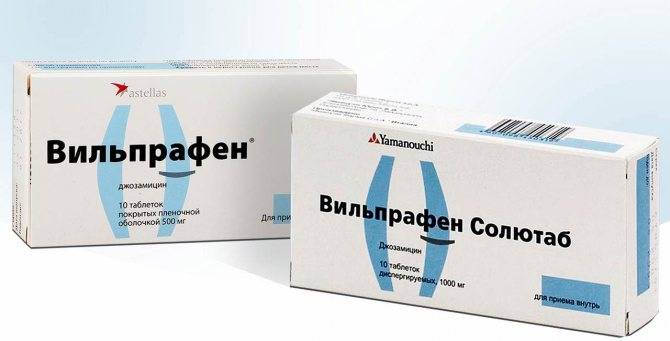
Reasons for appearance
If subcutaneous pimples have become a constant (obsessive) phenomenon, then this cannot be attributed only to a cosmetic defect.
Diseases from a number of systems in the body can provoke the appearance of subcutaneous acne:
- pyelonephritis with inflammation in the urinary system;
- gastritis, constipation, stomach ulcer due to digestive failure;
- infection due to the release of toxins in the blood, leading to disruption of the production of the sebaceous glands;
- adrenal tumor due to excessive testosterone production, endocrine system disorders.
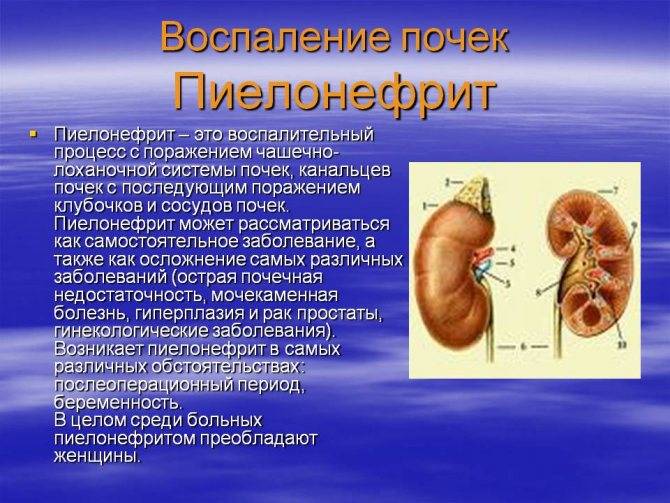
Other indicators of the appearance of unsightly, unpleasant acne on the chin:
- avitaminosis;
- excessive sweating;
- age;
- cold;
- hormonal imbalance;
- stress;
- metabolic disease;
- indigestibility of the product;
- weakened immunity;
- hereditary factor;
- clogged pores;
- allergy;
- bad ecology;
- lack of proper skin care.

Hormonal changes
Often, subcutaneous acne on the chin can occur in girls during puberty (10 - 17 years).
Reference! Hormone imbalance is often observed in girls, when rashes appear to a greater extent before menstruation or in case of their delay. If comedones begin to swell and do not go away over a long period of time, then you should see an endocrinologist or gynecologist.
Sebaceous gland dysfunction
Failure of the ovaries and adrenal glands, which are responsible for the production of estrogen (testosterone), is observed with improper functioning and activation of the production of sebaceous glands, leading to acne on the chin.
Dermatological diseases
Pimples or small bumps on the face and chin may be a sign of one of the types of dermatological diseases:
- actinic keratosis;
- melanoma;
- herpes;
- wart;
- abscess;
- dermatomycosis;
- dermatitis;
- erythematous lupus:
- rosacea.
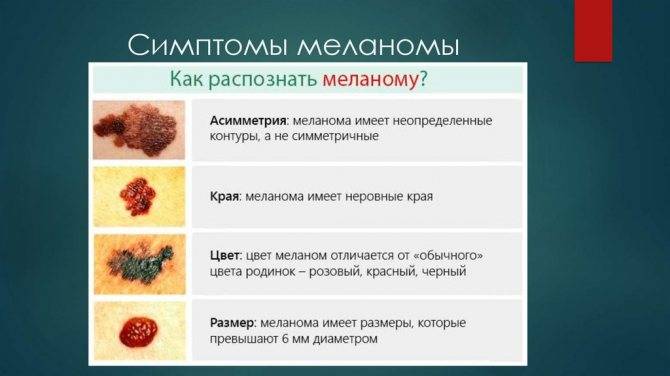
Improper skin care
Lack of timely hygiene can lead to large-scale spread of acne not only on the chin, but also on the face, neck, and body.
Almost any contact can cause infection of the upper layer of the dermis. In particular, improper skin care provokes the penetration of viruses and bacteria, which favor the development of an unpleasant problem. Especially if a person’s skin is delicate and thin.
Often, under the influence of unfavorable factors, it begins to peel and crack, leading to wounds and cracks for the unhindered penetration of pathogenic flora.
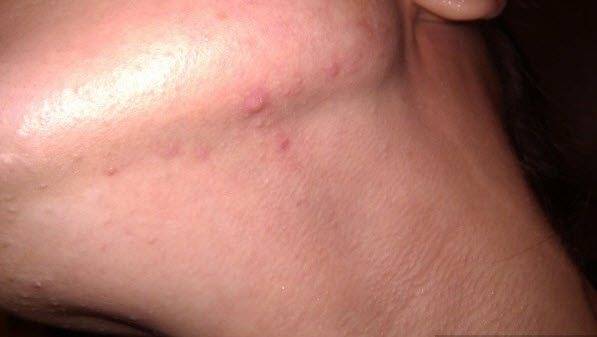
Impaired cell immunity
The process of cell division and production both inside the body and on the skin occurs from the immune system. The imbalance leads to blockage of the sebaceous glands and disruption of metabolic processes in the upper layers of the epidermis.
Often teenagers suffer from acne on the body, having inherited it from their parents if they had similar problems at one time.
Read reviews of Clearwin for acne. How to get rid of black acne on your back? More details here.
Unhealthy diet
The pancreas sooner or later fails if you eat incorrectly. Abuse of fatty, high-carbon foods helps create favorable conditions for the life of microbes and bacteria under the skin.
As subcutaneous sebum accumulates, a blockage or sebaceous plug forms. The problem is an unbalanced, unhealthy diet, abuse of fatty, sweet foods.
The chin is sensitive to the accumulation of harmful components in the body. The digestive system tries to push the accumulated toxins out, but is unable to cope due to the thick upper layers of the epidermis, thereby creating a blockage of the sebaceous glands.

Photo: Nature of the rashes
Subcutaneous acne on the chin is an unpleasant phenomenon that does not look very aesthetically pleasing.
See how to remove redness after acne. How to clear acne at home recipe? Find out further.
How to clear your face of acne using folk remedies?
The answer is here. Before starting treatment, it is worth finding out the main causes of this condition. It is possible that acne appears as a result of a serious illness that may require special treatment.

